Guest blog written by Luis Paredes

When I decided to apply for the Program, I was not sure I would get accepted! With all the complicated crises around the globe, I thought my country’s problems were not that hard to solve or -even- that important. Happily, I was totally mistaken. Once I arrived in Boston and interacted with each of the amazing group of participants, I realized I was in the right place. I could not believe that we shared almost the same problems no matter where we live!
The gospel …
As for my expectations about the course, well I thought it would be a very theoretical, book-oriented program with some interaction spaces and lots of academic work to do!
Of course, I was not totally mistaken! At HKS we had lots of readings, study sessions, and classes with world-class faculty. But it was not entirely theoretical, boring or book oriented. We really learned by listening and participating through the debates and experiences of our professors…
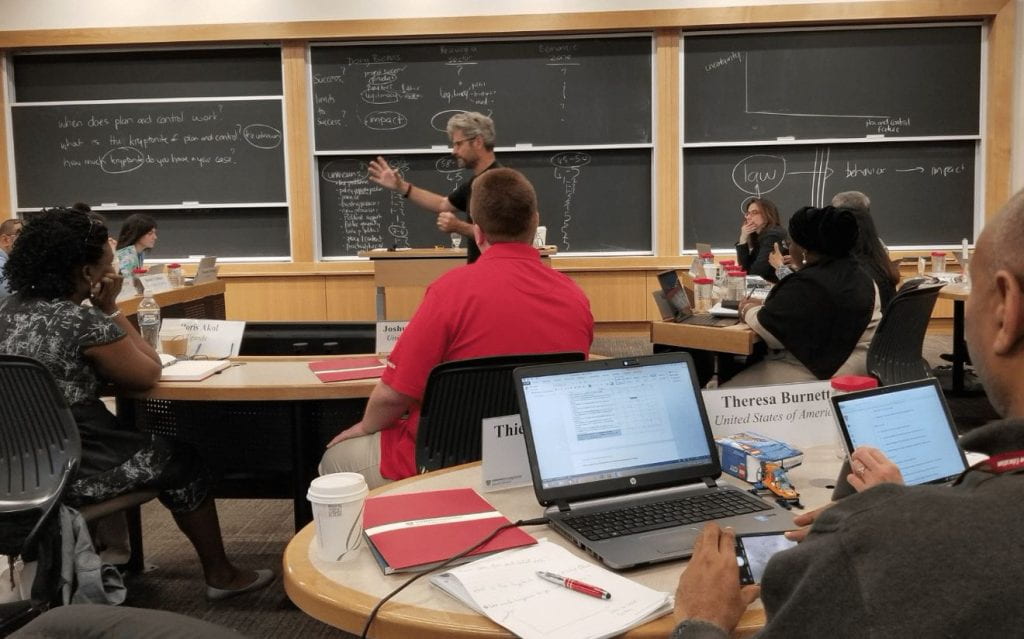
Of course, we had some fun too! I really enjoyed the on-campus experience.
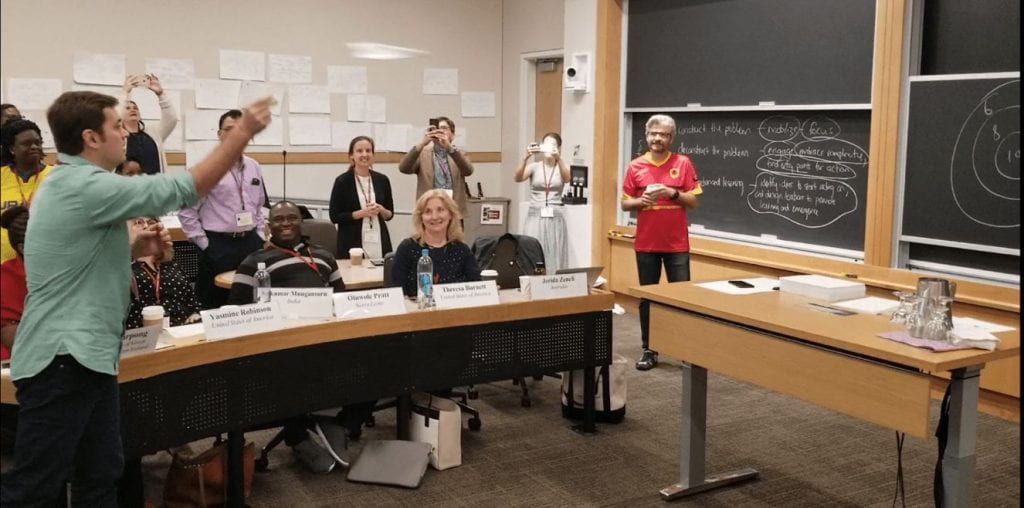
One of the key learnings from this course is that your work is never really done. PDIA is based on iterations, permanently trying to understand the problem in a better way to find comprehensive solutions for our citizens. These iterations are at the core of the whole process because they help to identify and manage the problem.
Another important learning is related to the ability to build relationships based on mutual trust. You cannot promise to solve all the problems (or even one single problem!) with only one iteration. You must be very honest with the organization and help to shape expectations. Otherwise, they will not believe you ever again. People do appreciate transparency as a way to show respect for their time and effort.
Anyway, after that magical week, we had to return home and spread the PDIA gospel!
The Path: PDIA
Once in our home country, we faced the same problems, but this time we had a new set of tools, an approach that would help us get the job done!
Well, Matt told us the path would be complicated and that maybe we will not find all the answers.
At this point, I thought I was not making any progress. I did not realize the complexity of the process until I discover that my whole experience was about finding the public organizations interested in the implementation of the approach. In fact, in retrospect, this was my first iteration.
My country´s particular situation (the former President was impeached, the Vice President assumed the Presidential Office and the Congress was dissolved) made it very difficult for me to find any Ministry or National Agency interested in anything but the survival of their main policies (and jobs)!
So, I decided to deconstruct my own problem, and I prepared my fishbone:
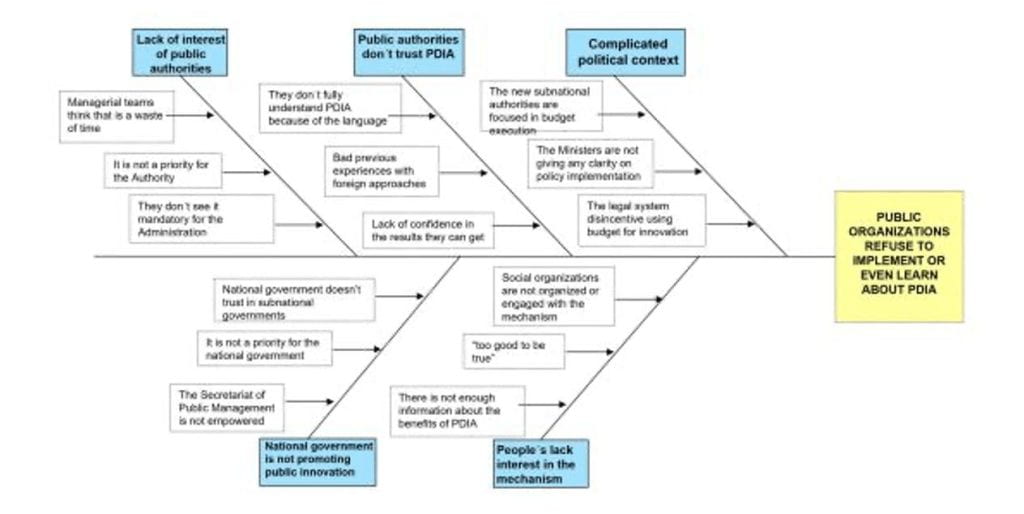
I search for entry points and I realized that the main problem was the authorities do not care about something they do not understand. Since Matt was not coming to Peru any time soon, I decided to visit some public officers to explain to them the approach and to find a way through this.
My first 4 or 5 attempts were a complete failure. But I kept trying. I traveled even out of Lima (my hometown) to find public organizations interested in the application of the PDIA. Anisha was amazing keeping us together and motivated! I guess we would never get this far without her. Thank you!
Every time I visited a new authority, I understood that I must focus on the relevance of the PDIA linked to the public value creation process. I learned that I cannot avoid the context and I had to read about the problems of the region/institution/people I was visiting in order to be more effective. Anyway, the time was running, and I was trying harder. But there was no light outside the tunnel. Until I finally found it.
The light at the end of the tunnel
After more than five “iterations” (if I can consider my frustrating meetings with different public officers iterations), I talked to a friend and shared my “journey” with him. He told me that he would not let me in either! “You are not the issue. What you are representing is the obstacle” I realized that I would have to change the way I was approaching the problem.
I realized that they did not trust what I represented. They perceived me as an outsider with a better-than-your idea (and even worst!) endorsed by Harvard. Fortunately, that was exactly what my IPP group was discussing on our last call: sometimes saying “this is Harvard” could be counterproductive. It was perfect timing!
So,what did I do? First, I started identifying the tools they would probably be more familiar with. Then, I reframed those tools to help me with the iteration process. This “intervention” on the tools came along with a contextualization effort for the speech: I have to adapt the PDIA message considering the problems they were facing, and the tools should reflect that I am aware of that context.
And that was the moment I saw the light at the end of the tunnel. I had to use PDIA to understand the problem in front of me and set a strategy to deal with the difficulty.
I am sure that was the moment when my way to tackle problems changed. I proved to myself that I could iterate in extreme circumstances and even the entry points to solve problems can be subject to iteration.
But that was not the end of the journey!
The PNSR is the acronym for “Programa Nacional de Saneamiento Rural” (National Program of Rural Sanitation). As its name implies, the program aims to improve the health of rural families through the provision of comprehensive water and sanitation services, of high quality and sustainable over time.
I spoke with their senior managers and convinced them to allow me to provide their staff with some support in change management (topic supported by the National Policy of Modernization of Public Management). After a couple of days, they accepted (it was not going to cost them anyway!).
So, we started!
I mixed tools: I used Mark Moore’s Strategic Triangle, then a flowchart, the fishbone, and finally a Pareto Diagram. They were used to the flowchart and the Pareto Diagram (I knew it) but not to the Triangle and the fishbone.
They worked in groups, so it was very interesting to see the contrast between all the alternatives they bring to the table. We work hard for 3 weeks. Just about the right time to tell my IPP group about this experience!
This was, for example, the effort -after the third iteration- of the group conformed by the people in the PNSR´s planning department.

Here we have the effort of the people in the operations department:
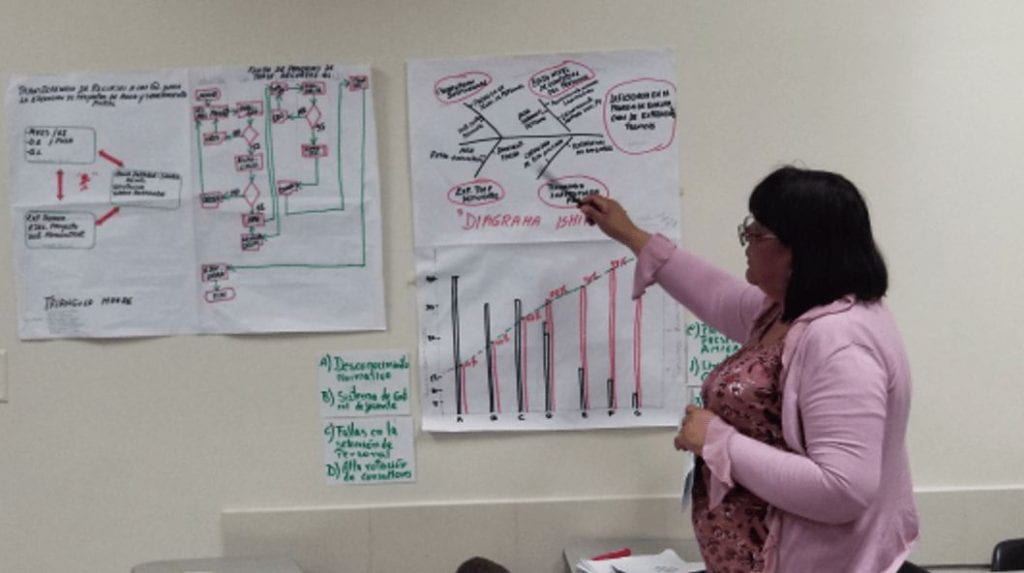
I encouraged them to iterate a lot! They were amazed about the possibility to think about the problem and deconstruct it in a way they could have a better understanding of the whole situation, even the context.
This is a photo of all us, with me in a blue suit!
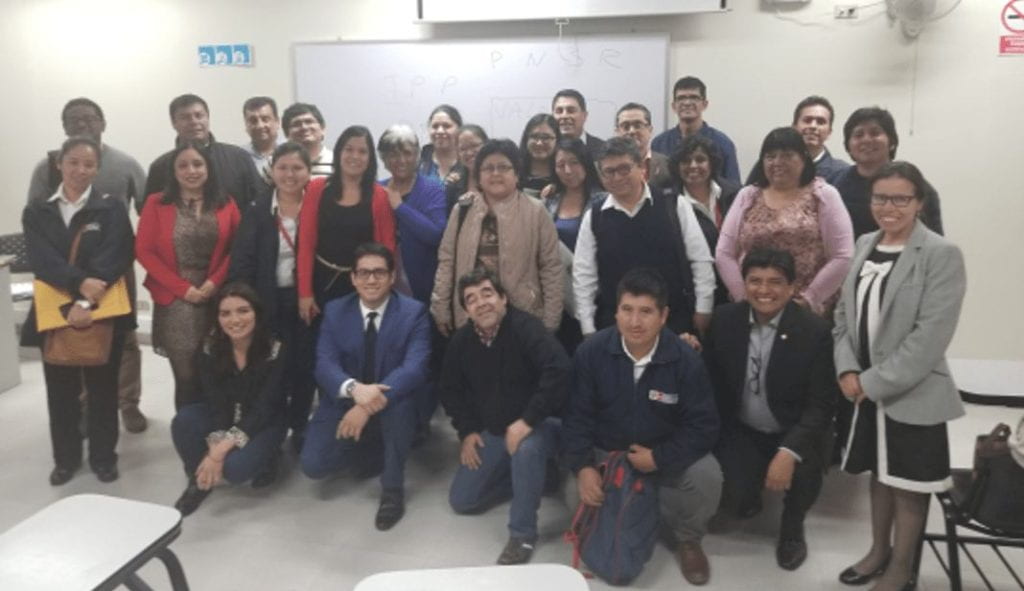
I was incredibly happy for them. They proved that there is room for innovation in the public sector. We just must find a way to go through our daily routine and start thinking about our citizens. They deserve it!
Some final words …
It was not easy at all. I thought more than once that I would probably come back to Matt, Salimah, and Anisha and tell them I could not do it. That it was so hard. But then I remembered Matt telling us that “sometimes realizing that we do not fully understand the problem is a huge improvement”. And I think that is what happened to me.
I asked myself: Why I am doing all of this? Why I am going forward on the PDIA? Is this Harvard thing that important?
Then I realized I was doing it -and I always did- for our citizens. The people we, as public servants, are supposed to serve.
PDIA showed me that there is no right way to approach a problem. The problem is taking things for granted and stop questioning the very reason why they are done leads us to the same results: frustrated citizens and a great discomfort with democracy itself.
Thank you all, guys! And as Matt told me “Keep doing development without limits!”
P.S.: I will continue this journey with a group of local governments! But that will be another story… 😉
This is a blog series written by the alumni of the Implementing Public Policy Executive Education Program at the Harvard Kennedy School. Participants successfully completed this 7-month blended learning course in December 2019. These are their learning journey stories.
To learn more about Implementing Public Policy (IPP) watch the course and testimonial video, listen to the podcast, and visit the course website.